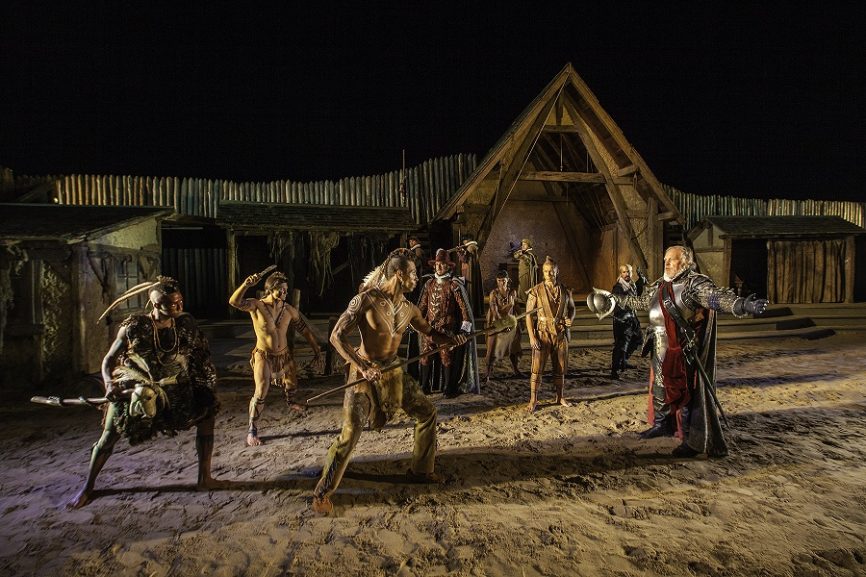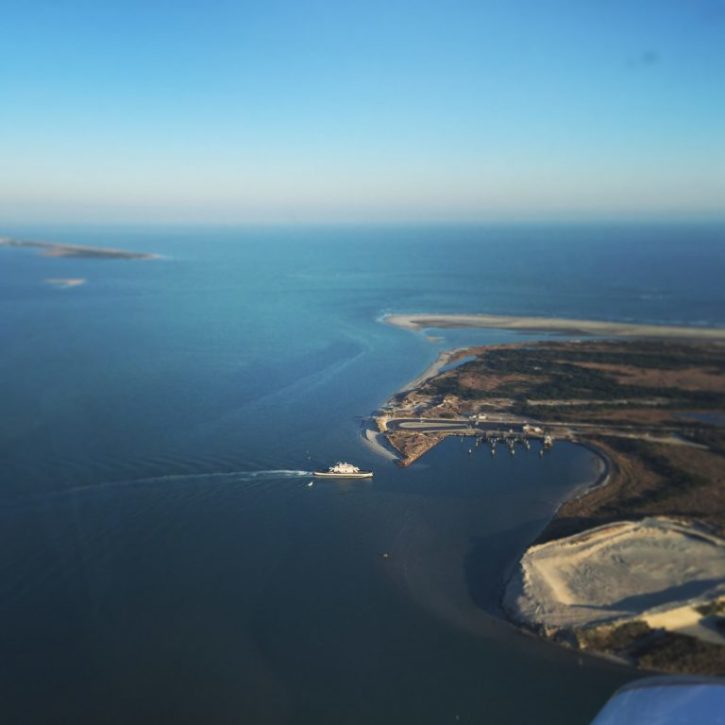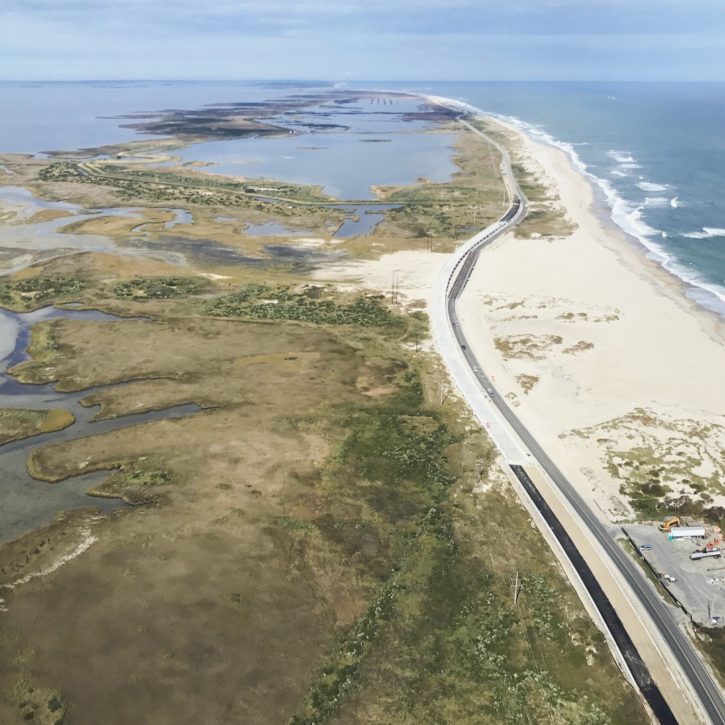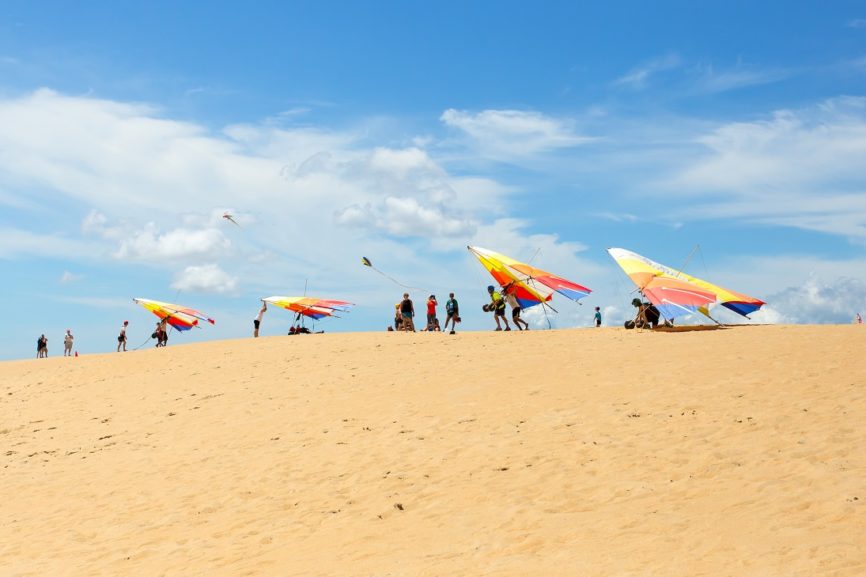Over the years—the many years— that Outer Banks has been a place of numerous firsts. We thought it would be fun to write about some of them.
We’re not going to write about the obvious ones. The Wright Brothers and their Wright Flyer; or the Lost Colony which was the first attempt by England to colonize the New World. Instead, we’re going to pick out a few Outer Banks firsts that may not be as well known and write about them.
First English Child Born in the New World
Virginia Dare was born on August 18, 1587. Her parents were Ananias Dare and Eleanor White.
The reason we know when she was born is because her grandfather, John White, was one of the commanders of the expedition and was the leader who was selected to go back to England and bring back the much-needed supplies.
Unfortunately for the colony and Virginia, the Spanish Armada got in the way and White was unable to return to the Roanoke Colony until 1590. When he returned, the colony was deserted and the only indication of where the colonists may have gone was the word “Croatoan” carved into a tree.

Because of that, we know nothing more about the life of Virginia Dare other than her birthdate.
First Union Victory of the Civil War
After the disastrous first battle of Manassas, also known as Bull Run, in July of 1861, the Union was desperate for a victory.
The taking of Hatteras Inlet in August of that year provided the north with the first real reason to cheer.

Union military leaders felt taking Hatteras and Ocracoke Inlets and sealing off Pamlico Sound would have two significant strategic purposes.
Blockade runners had been using the inlets almost at will and by securing Pamlico Sound they would disrupt a major source of supply. It was also clear that if they held northeastern North Carolina, the supply chain between Richmond and Wilmington would be significantly impacted.
And with a significant force in the field, they could threaten either Richmond or Wilmington, forcing Lee and other Confederate generals to commit troops that could have been used elsewhere.
The Confederate Army constructed two forts to protect the inlet. Neither were particularly well constructed, well-armed or fully staffed.
On August 28 the Union bombardment of the fort began. On August 29 the Confederate forces surrendered with 700 men taken prisoner.
Supposedly when news of the victory was told to President Lincoln late at night, he danced a jig in his nightshirt.
Richard Etheridge-First African American in Charge of the Lifesaving Station
In the 1870s Sumner Kimball was tasked with turning the Lifesaving Service into a professional organization. He and the inspectors he hired had little patience for the graft and nepotism that was rife in the service. And he cared far more about competence than skin color.
After a disastrous rescue attempt at the Pea Island Station, the station Keeper and Assistant Keeper were fired and Etheridge was plucked from a nearby station to be in charge.
The existing staff at the Pea Island station were white and were given the choice of remaining or transferring. They chose to transfer and Kimball and his inspectors moved quickly to create an all African-American crew.

It’s not surprising that Richard Etheridge was chosen. Born into slavery on Roanoke island, he had been taught to read and write as a child. Teaching a slave those skills was a felony in the state of North Carolina before the Civil War.
There is some evidence to suggesting Etheridge was the illegitimate son of the slave owner, John Etheridge. By all accounts, Richard was raised with the Etheridge family and was afforded preferential treatment.
When Union Forces freed Roanoke Island in 1862, he enlisted in the Union Army, rising to the rank of senior sergeant in his battalion.
He was uniquely qualified for his appointment and Kimball’s belief in him was justified with the rescue of the schooner ES Newman in 1896. It took 100 years, but in 1996 the crew was awarded the Gold Lifesaving Medal.
First Hang Gliding School in the US and maybe the World
Since 1974 Kitty Hawk Kites has been teaching the world to fly from the steep slopes of Jockey’s Ridge.
It all began when college friends John Harris and Ralph Buxton saw a video of a new personal glider with a flexible wing.
By their own admission, they didn’t know much when they began—just an instructional video.

They quickly realized there was real potential in teaching people the joy of this new way of flying and Kitty Hawk Kites came into existence.
Ralph and John went their separate ways and today John is the President of Kitty Hawk Kites.
Kitty Hawk Kites has expanded over the years into almost every type of recreational activity on the Outer Banks. However, the core of the company continues to be teaching the world to fly at its hand gliding school.
